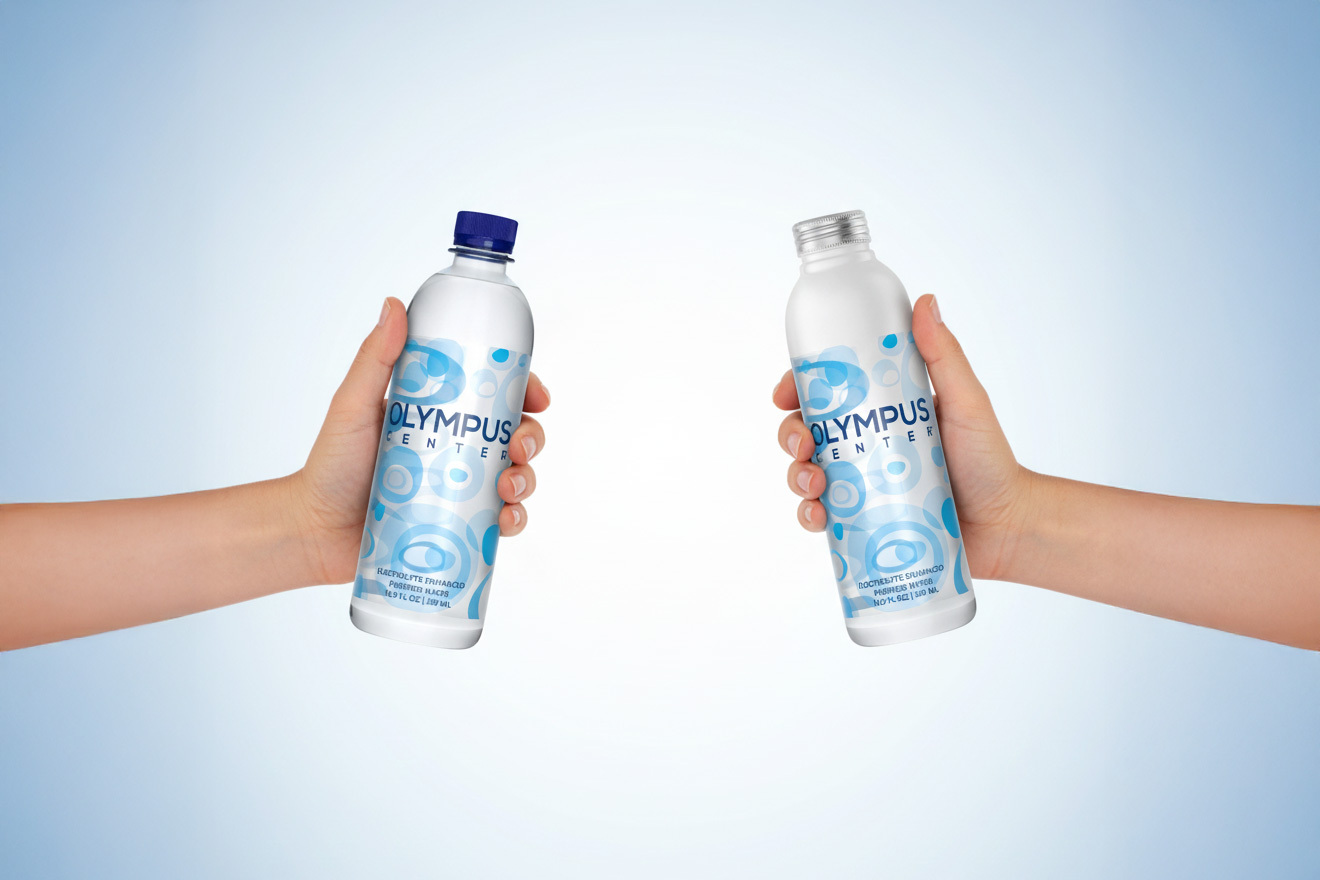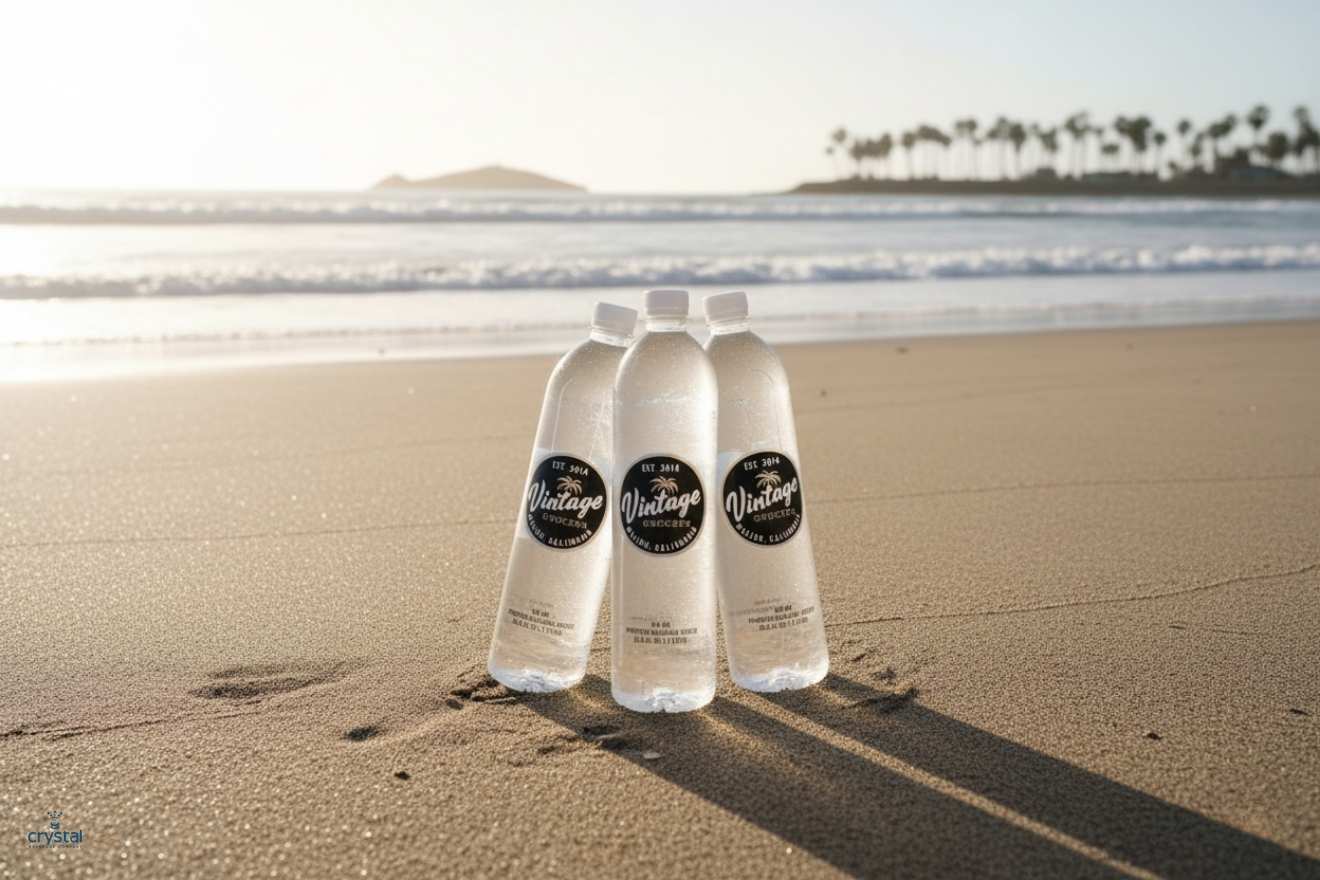How Are Plastic Water Bottles Recycled?


Are water bottles recyclable? Yes, and no. Most plastic water bottles are made from either polyethylene terephthalate, also known as PET plastic, or HDPE (high-density polyethylene). These two materials are generally recyclable plastics, and are collected in curbside recycling programs.
There are also plastics that cannot be recycled. These are typically thrown out as waste products, or melted in the incinerator. It is important to know how our plastic bottles are recycled so we can stay conscious about our plastic consumption, and our waste management systems. Here's how plastic bottles are recycled:
How Are Plastic Water Bottles Recycled?
The Step-by-Step Process
Step 1: Sorting
The first step in the recycling process for plastic water bottles is sorting. It is here where plastic bottles are sorted through recyclable, and non-recyclable variants. Recyclable plastic bottles, like PET plastic, are sent to the processing facility, while the non-recyclable ones are thrown out or sent to the incinerator as waste products.
Sorting also removes any impurities or possible contaminants that may have found their way into the plastic bottles. These may include other containers like tin cans, as well as debris such as leaves or even pests. Water bottle caps are processed differently, so they are sorted out in this stage as well.
Step 2: Shredding
Recycled plastic bottles then go through a shredding process where the bottles are sent through machines that cut up the bottles into manageable flakes. The flakes melt much faster and easier, and make the cleaning process more thorough as well.
Step 3: Cleaning
The plastic bottles, now flakes, are sent to the cleaning stage to remove any residues, as well as dust or debris that gathered in the bottles. Cleaning also removed traces of beverages or liquids that were stored in the plastic bottles for their original use. Some recycling plants also disinfect the plastic flakes at this stage.
Step 4: Melting
The flakes are then melted through a slow heating process, and turned into small, hard pellets that will serve as raw materials in creating new plastic bottles, plastic packaging, pallets, and more. The pellets are easy to remelt, and are easy to pack up as raw materials.
Step 5: Molding
Once the recycled plastic bottles are ready to be melted and remolded into new bottles, they undergo another melting process before being placed into molds. Plastic cools down quickly, so the entire molding process goes by fast. The pellets can now be turned into new products depending on the order demand.
Ways to Recycle Plastic Water Bottles at Home
Besides handing them to recycling facilities, you can also recycle plastic bottles at home by reusing or repurposing these bottles. Recycling plastic bottles at home is often simple and versatile, as there are many uses for a plastic bottle.
Plastic Bottle Planter
Cut the top off a liter bottle 1/3 of the way down, and flip it upside down. Poke holes around the neck of the bottle using a soldering tool, and a hole at the cap of around 1/4 in diameter. Loop a thick rope through the hole, and knot the end to secure it. Fill the top with some potting medium, and add some water in the bottom - you've got a self watering planter!
Plastic Bottle Watering Can
Use a heated metal chopstick or long nail to poke holes at the top of a wide-mouth bottle until it resembles a salt shaker lid. Poke a small hole at the neck of the bottle, around 1/3 of the way from the cap. If your bottle has a handle, place the hole right where your thumb can comfortably grip on the handle.
Fill the bottle with water just below the hole, and use this as a watering can for your garden. Place your thumb on the hole at the neck to stop the water, and release for a steady water flow. You can continue to use the bottle as a watering can until the plastic wears down.
Plastic Bottle Pencil Holder
A simple DIY project that kids can do is to create a bottle pencil holder. It is a good way to recycle plastic bottles, and can be used to store other items like socks, underwear, markers, painting tools, and more.
Take a number of 500mL plastic bottles, and cut off the top around midway or 1/3 of the way down. Use spray paint, colored paper, or acrylic paint to design the bottles, and glue them together using hot glue. Weigh down the bottles with dry beans, rice, or small pebbles, and you've got a pencil holder organizer for your art materials or fabrics!
DIY Fly Trap
Like the planter, cut the top off your liter or half-liter bottle, and place it upside down. Remove the cap, then tape the edges where the two bottle parts meet to secure them in place. Place two teaspoons of yeast, 1/4 cup of brown sugar, and 1 cup of lukewarm water to trap mosquitoes and flies. Alternatively, you can use pure or diluted apple cider vinegar.
Plastic Bottle Broom
Take a couple of liter bottles, and cut off the bottom. You can use the bottoms as paint palettes or store jewelry in them. Cut the bottle vertically into thin strips, stopping just below the neck of the bottle. overlap a couple of bottles to make a full broom, and secure it on a sturdy stick. You can use the broom outdoors to rake up any fallen leaves and large pieces of debris.
Plastic Rope from Water Bottles
Purchase or create a plastic rope cutter, and use it to make thin strands of plastic rope that are durable, waterproof, and can be heated to secure your belongings. Plastic rope can be used in gardens, moving houses, securing luggage, and more.
Facts and Figures About Plastic Water Bottle Recycling
- An Average Consumer uses 156 Bottles Per Year - and the US alone consumes 1 Million bottles per day!
- 91% of All Plastic Bottles are Considered Waste - they take up space in landfills, and make their way into our oceans.
- 30% of Recyclable Plastic Bottles are Recycled - into fabrics, packaging, clothing, and other non-food, one-time uses.
- It Takes 450 Years for Plastic to Decompose - which means all plastic ever created is still in our oceans and landfills.
- 937 Million Plastics will be in the Ocean by 2025 - for reference, there are approximately 1 Million species of ocean animals.
The Importance of Recycling Plastic Water Bottles
Recycling plastic beverage bottles is essential to our ecological well-being. We have a huge waste management problem, where plastics are needlessly thrown into landfills and oceans instead of processed as recycled materials. If we continue to consume plastics the way we currently do, our oceans will soon contain more plastics per ton than fish!
There are better, more sustainable alternatives to plastic bottles, and we also need to think about our waste stream systems. We need to do better in order to leave a better world for future generations, and we have to make better choices now before it's too late.
Check out our My Own Water plastic alternative initiatives here.






